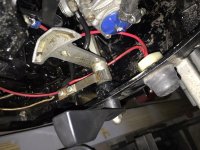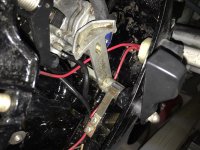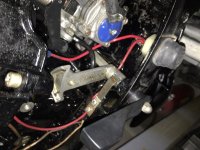I removed the foot off a 9.8 merc to install an impeller. When I assembled I had forward and neutral - but no reverse. Every thread I read said I must have installed wrong. So tried a few more times with same results. So now I have the foot off and still not getting the "throw" I need from the shift lever. I will try to attached some pictures. IN: Forward the selector clicked into a detent under the cowl. Neutral also clicks into a detent. Reverse does not move enough to hit the detent (Lower unit is removed from engine)
My thoughts are that maybe this engine has some sort of safety that will not allow reverse if it is not locked to the transom? does this motor have anything like that? Also the manual says the engine can be damaged it shifted into reverse when not running... but what will get damaged/ what should I look for?
Thanks for any help.
My thoughts are that maybe this engine has some sort of safety that will not allow reverse if it is not locked to the transom? does this motor have anything like that? Also the manual says the engine can be damaged it shifted into reverse when not running... but what will get damaged/ what should I look for?
Thanks for any help.




